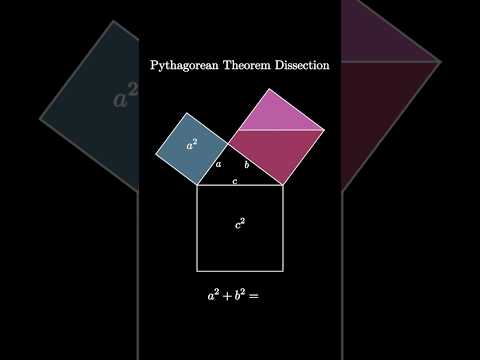| IN BRIEF |
|
Mathematics has always been a fertile ground for intellectual challenges, and the triangle dissection puzzle is a perfect example. This problem, which has captivated experts for over a century, has finally found its solution thanks to a dedicated team of mathematicians. By combining modern theories with an innovative approach, they proved that the solution, found 122 years ago, was indeed optimal. This discovery puts an end to a debate that has fascinated many generations of mathematics enthusiasts.
The Puzzle of Dudeney: A Captivating Mathematical Enigma
The problem, known as the Dudeney dissection or the hatter’s problem, was originally proposed in 1902 by Henry Dudeney, a self-taught mathematician and puzzle columnist. The challenge was to cut an equilateral triangle into a minimum number of pieces to reassemble it into a square. Two weeks after launching this challenge, Dudeney received a solution from Charles William McElroy, an office worker from Manchester, who managed to solve the puzzle in four pieces.
Despite the ingenuity of this solution, one question remained: could it be improved? The challenge lay in maintaining equal areas between the triangle and the square while considering geometrical constraints. At that time, the computational tools were not as advanced as today, making mathematical verifications more laborious.
Modern Advances in Graph Theory
At the Japan Advanced Institute of Science and Technology (JAIST), Tonan Kamata, along with Ryuhei Uehara and Erik Demaine from the Massachusetts Institute of Technology, developed a new approach to solve the puzzle. By using graph theory, they were able to study the relationships between the edges and vertices of the triangle and the square, revealing deep connections between these geometric structures.
Their method involved analyzing various paths within each shape, comparing the lengths and angles of the edges. This process allowed them to eliminate the possibility of a solution with two pieces, as calculations showed that the diagonal of a square was too short to match the edge of a triangle with the same area. Thus, demonstrating a solution with three pieces proved to be equally complex, requiring the researchers to exhibit considerable creativity to advance their work.
A Definitive Solution Through Proof by Contradiction
To prove the impossibility of a solution with fewer than four pieces, the researchers divided the possible dissections into five distinct categories. By applying the same logic to a square, they identified 38 unique categories. The comparison of these triangular and square graphs ultimately demonstrated the absence of corresponding paths between the two shapes.
Their discovery relies on complex lemmas, used as intermediate steps to solve the mathematical problem. Through the method of proof by contradiction, they showed that none of the paths traced in the square could align with those of the triangle. This technique of matching diagrams could potentially revolutionize the solving of other similar open questions in origami.
A New Horizon for Math Enthusiasts
The publication of their results on arXiv.org under the title “Dudeney’s Dissection Is Optimal” marks a pivotal moment in the history of this puzzle. As Kamata noted, every unsolved problem, no matter how simple it may appear, is an invitation to exploration and discovery. Mathematics remains a realm where everyone can contribute, regardless of their background or path.
The implications of this discovery are vast, not only for math enthusiasts but also for other fields where mathematical principles find applications, such as engineering and physics. The researchers hope that the simplification of their proof will inspire other curious minds to push the boundaries of knowledge.
As the triangle dissection puzzle finally finds its answer, a new question arises: what other mathematical enigmas remain in the shadows, ready to reveal their secrets to those bold enough to challenge them?








